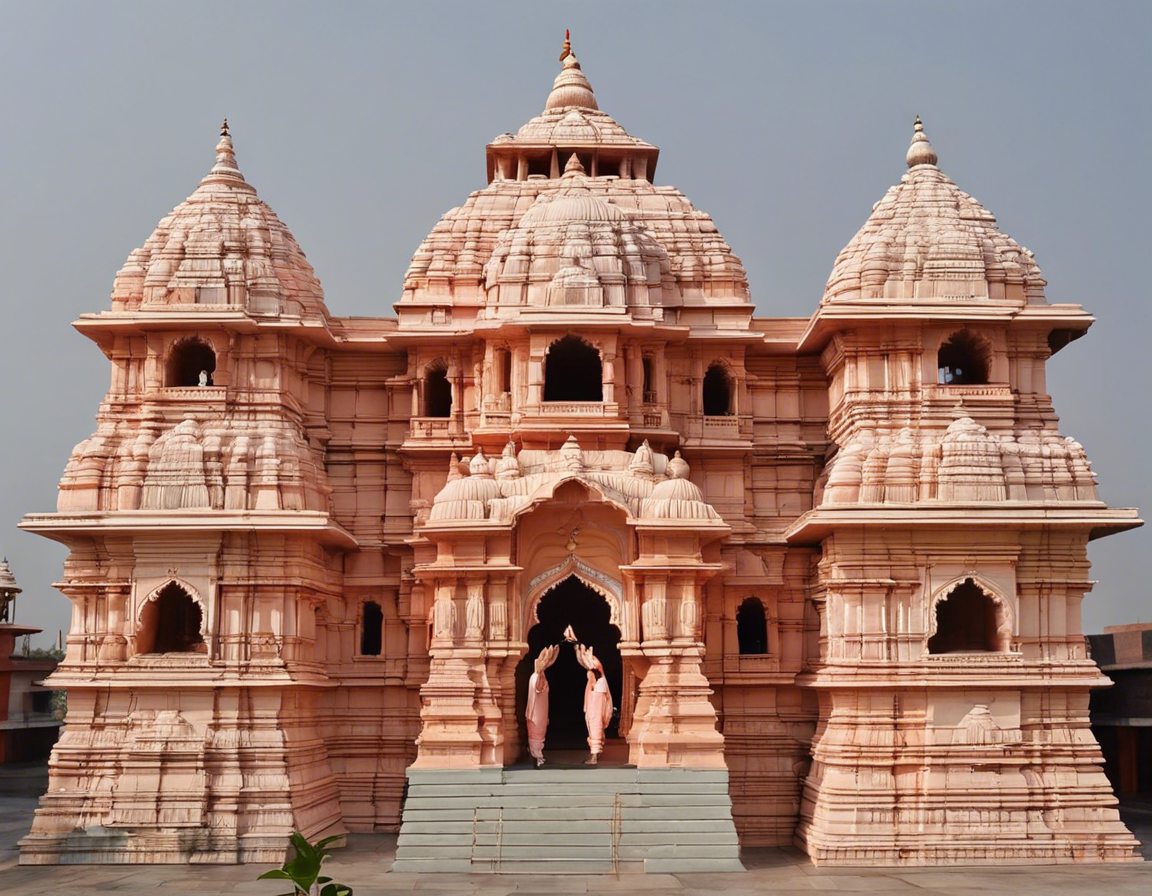Ayodhya Ram Mandir Murti Unveiling Ceremony: A Sacred Occasion
In the ancient city of Ayodhya, the unveiling of the Ram Mandir murti marked a historic and momentous milestone in the cultural and religious landscape of India. The construction of the Ram Mandir, dedicated to Lord Ram, has been a subject of profound significance, spanning centuries of devotion, belief, and spiritual reverence. The ceremony of unveiling the murti, or sacred statue, of Lord Ram symbolizes the culmination of a long-standing cultural and socio-religious aspiration of millions of devotees around the world.
A Historic Journey:
The Ram Janmabhoomi Movement:
The Ram Janmabhoomi movement, advocating for the construction of a temple at the site believed to be the birthplace of Lord Ram, has been a focal point of political and social discourse in India for decades. The movement gained momentum in the late 1980s and culminated in the Ayodhya verdict of 2019, which paved the way for the construction of the Ram Mandir.
Architectural Marvel:
The Ram Mandir is not merely a place of worship; it stands as a testament to architectural grandeur and cultural heritage. The temple’s design and construction are deeply rooted in traditional Hindu architecture, with intricate carvings, majestic domes, and ornate pillars that reflect the splendor of ancient Indian craftsmanship.
Symbol of Unity:
The unveiling of the Ayodhya Ram Mandir murti transcends religious boundaries, symbolizing unity, peace, and harmony. It signifies the coming together of people from diverse backgrounds to celebrate a shared cultural heritage and spiritual legacy, reaffirming the ethos of ‘Vasudhaiva Kutumbakam’ – the world is one family.
The Divine Moment:
Sanctity and Rituals:
The unveiling of the murti in the Ayodhya Ram Mandir is steeped in sacred rituals and traditions. Vedic chants, prayers, and elaborate ceremonies mark the auspicious occasion, inviting blessings from the divine and invoking the presence of Lord Ram in the sanctum sanctorum.
Devotional Offering:
Devotees from far and wide gather to witness the unveiling ceremony, offering their prayers and reverence to Lord Ram. The murti, sculpted with utmost precision and devotion, embodies the divine essence of the epic hero, symbolizing righteousness, virtue, and divine grace.
Spiritual Embrace:
As the curtains part to reveal the radiant form of Lord Ram, a wave of spiritual fervor sweeps across the gathering, filling hearts with reverence and devotion. The presence of the murti evokes a sense of transcendental bliss, guiding devotees on a spiritual journey of self-discovery and enlightenment.
Divine Reverence:
Pilgrimage and Darshan:
The unveiling of the murti in the Ayodhya Ram Mandir draws devotees and pilgrims from every corner of the country, eager to seek the blessings of Lord Ram. The opportunity to have darshan, or divine sight, of the sacred murti is considered a transformative experience, imbuing one’s life with divine grace and auspiciousness.
Cultural Celebrations:
The unveiling ceremony is not just a religious event but a cultural extravaganza that showcases the rich tapestry of Indian traditions and heritage. Folk performances, devotional music, and spiritual discourses add vibrancy and color to the atmosphere, creating a festive ambiance of joy and celebration.
Legacy of Devotion:
The Ayodhya Ram Mandir murti stands as a beacon of devotion and piety, inspiring future generations to uphold the values of dharma, righteousness, and compassion. The legacy of Lord Ram’s teachings resonates through the ages, guiding humanity towards the path of truth, love, and spiritual enlightenment.
Guiding Light:
Moral and Ethical Values:
The presence of the murti in the Ayodhya Ram Mandir serves as a moral compass, guiding individuals to lead a life of righteous conduct and ethical values. The teachings of Lord Ram, as depicted in the epic Ramayana, inspire people to overcome adversity, uphold truth, and serve humanity with selfless devotion.
Harmony and Unity:
The Ayodhya Ram Mandir murti transcends sectarian divisions, fostering a sense of unity and inclusivity among all devotees. Regardless of caste, creed, or background, the murti beckons humanity to embrace diversity, respect differences, and unite in a shared vision of peace, harmony, and brotherhood.
FAQs:
1. What is the significance of the Ayodhya Ram Mandir murti unveiling?
The unveiling of the murti symbolizes the culmination of a long-standing cultural and socio-religious aspiration of millions of devotees, marking a historic milestone in India’s spiritual landscape.
2. How does the Ram Mandir architecture reflect traditional Hindu design principles?
The temple’s design incorporates elements of traditional Hindu architecture, such as intricate carvings, majestic domes, and ornate pillars, showcasing the splendor of ancient Indian craftsmanship.
3. How does the unveiling ceremony foster unity and peace among people?
The ceremony transcends religious boundaries, symbolizing unity, peace, and harmony, bringing together people from diverse backgrounds to celebrate a shared cultural heritage.
4. Why is having darshan of the murti considered a transformative experience?
Having darshan of the murti is believed to imbue one’s life with divine grace and auspiciousness, guiding individuals on a spiritual journey of self-discovery and enlightenment.
5. How does the presence of the murti inspire future generations?
The murti stands as a beacon of devotion and piety, inspiring people to uphold the values of dharma, righteousness, and compassion, guiding humanity towards spiritual enlightenment.

